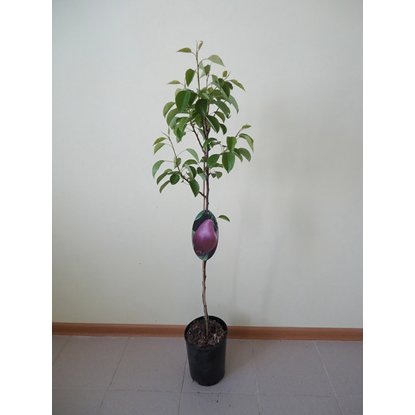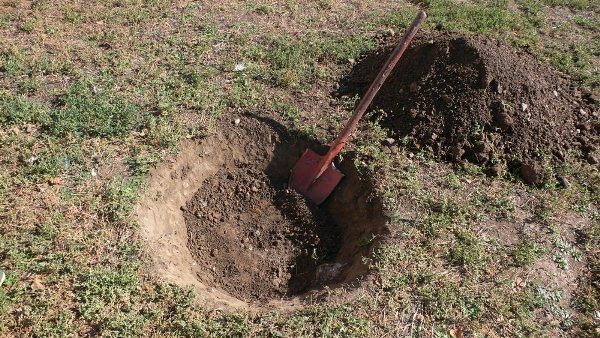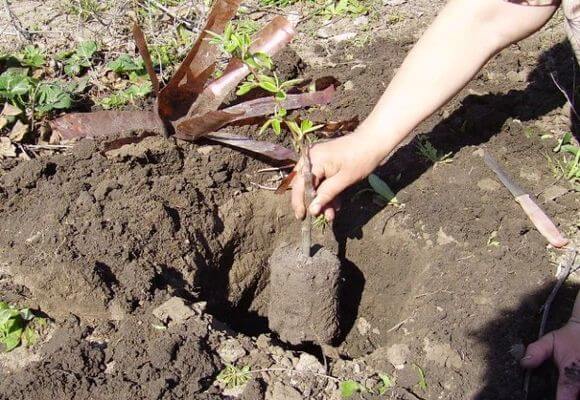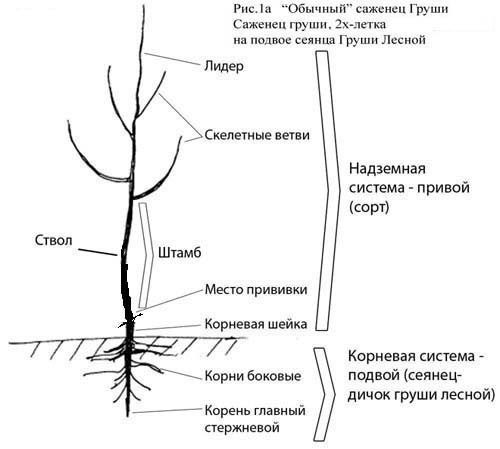Content
Pear is a fruit tree of the Rosaceae family. In the gardens of Russia, it is found less often than the apple tree, due to the fact that this southern plant requires more attention to itself and tolerates the cold worse. At the same time, the pear is durable, it can live and bear fruit for up to 100 years. It is appreciated for its exquisite taste and aroma of fruits with juicy, tender, grainy pulp and thin, delicate skin. A novice gardener needs to know the nuances of growing a crop - from the moment it is placed in the ground to wintering. Planting a pear correctly is necessary for its health and better fruiting. Plant immunity, growth and yield depend on this.
When to plant a pear
Planting time for pears varies by region. In the south, it is preferable to do this in autumn: a young tree will not suffer from heat, soil moisture and temperature conditions contribute to the rapid development of the root system and, accordingly, better survival of the seedling. In cold regions - in Siberia, in the Urals, pears are planted in spring. Frosts without snow cover are frequent there, and when planting under winter, the tree can completely freeze out. From spring to winter, the plant will take root well and it will be easier for it to survive frosts. In the middle lane, the gardener has the opportunity to choose when to plant a pear - in autumn or spring. Both planting options are applicable if precautions are taken. In the first case, a young tree needs careful shelter from cold weather and rodents, in the second - in regular soil moisture and protection from sunburn.
How to plant a pear in spring: a step-by-step guide
It is better to purchase planting material in the fall, at this time the choice of varieties and types of pears is wider. In this case, you need to choose seedlings with a closed root system. Before planting pears in spring, you need to save:
- dig in the garden - dig a trench, water abundantly, set seedlings and cover with earth to the middle of the trunk;
- dip the roots in a clay mash, wrap in plastic and put in the cellar.
Buying seedlings in the fall is also preferable because they are dug up in nurseries during this season. In the spring, it is difficult to determine how they were stored throughout the winter.
Where to plant a pear on the site
The pear is extremely demanding on lighting - even in partial shade, it will not bloom and bear fruit. The site should be closed from strong winds; for this, trees should be planted around in 2-3 rows. The pear can be planted on gentle slopes - southern, southwestern and western are suitable. Lowlands, where cold air and water stagnate, are not suitable for pears. The root system of the tree grows deep, it is important that the groundwater lies at a distance of 3-4 m from the surface of the earth.
The soil for planting pears requires light, loose and nutritious - soddy, soddy-podzolic, light loamy, sandy loam.It is good if there is a lake or pond nearby, the reservoir creates a microclimate favorable for a pear garden. You also need to take into account the neighborhood: a pear grows well next to an apple tree and a mountain ash, it does not get along well with stone trees, raspberries, currants, gooseberries, walnuts, lilacs, viburnum.
Landing site preparation
The area for planting pears should be prepared 1-2 years before planting. The soil is cultivated deeply, moving the top, fertile layer down, and the bottom up. Mineral and organic fertilizers are added. 1 m2 add 100-150 g of superphosphate, 30-40 g of potassium chloride, if the acidity is high, add lime (the required pH is 5.0-6.5).
From organic matter, manure (6-8 kg), or compost (7-10 kg) should be introduced. On nutrient-rich chernozems, the amount of these fertilizers should be halved. For better pollination and fruiting in one area, you will need to plant 2-3 pear trees.
Preparing a pear seedling for planting in spring
When purchasing pear seedlings before planting, you should give preference to zoned varieties grown in local nurseries and sold in specialized retail outlets. Their age should not exceed 3 years. It is believed that in the south it is better to plant annual trees. A young plant no more than 1.5 m in height with 3-5 lateral branches or developed buds receives the least root trauma and takes root more easily. It is easier for him to form a crown.
When choosing a pear seedling, you need to inspect the trunk; there should be no damage or irregularities on it. In a healthy plant, the roots are elastic, flexible, without spots, white at the cut. Before planting, they should be cut, leaving 3-5 large ones, 10 cm long, and a sufficient number of small ones. It is also useful to soak the roots in water for 12 hours with the addition of "Heteroauxin", "Epin" or another root formation stimulant. You can prepare a slurry of clay and manure and dip the roots in it. If the plant was sold with a lump of soil on the roots, it does not need to be removed. In the spring, you should purchase a pear seedling at rest - with unblown buds. It is not necessary to shorten the trunk when planting, recent studies indicate that this operation impairs rooting.
How to plant a pear in spring
The best time for planting pears in open ground in spring is the last decade of April. Work must be done in cloudy weather. A pit 1 m wide and 0.7 m deep is prepared under the pear. This should be done at least a week in advance, ideally in the fall (the soil should be given time to sit down). They form a drainage from crushed stone, make a pillow of sand, pour 20 liters of water, wait until it is completely absorbed. Then 2-3 buckets of prepared fertile soil are poured: the earth is mixed with humus, ash, 200 g of superphosphate and 150 g of potash fertilizer are added. Be sure to drive a stake into the center to tie a tree. The seedling is not buried, the root collar should be flush with the soil surface. When filling the ground, the seedling needs to be slightly pulled upward - this will help to avoid the formation of voids. Planting pears are watered abundantly. After subsidence of the soil, the voids are filled and compacted, trampling down around the trunk with your foot. Mulching with peat, rotted manure, plant humus, sawdust is beneficial for retaining moisture in the roots, provides additional nutrition to the plant. It is unacceptable to apply fresh manure, this will cause burns to the roots. The frequency of watering the pear after planting is 3-4 times a week.
At what distance to plant pears from each other
Planting density is an important consideration when growing pears.Their durability, the time of entry into fruiting, the quality of the crop, and, in part, winter hardiness, depend on the correct placement in the garden. The distance between trees when planting depends on the type of pear: vigorous plants should be 3.5-4 m apart in a row and 5-7 m between rows, undersized plants - by 1.5 m and 4-5 m, respectively. Correct tree placement is essential to ensure adequate nutrition and lighting. Many gardeners prefer to plant columnar pear varieties due to their compact size. A distance of 1 m between such trees will be sufficient.
Transplanting pears to a new location in spring
You can replant trees up to 15 years old. This should be done as delicately as possible, the stress for the plant should be minimal. To extract the pear from the soil, the trunk is dug in within a radius of 70 cm, an earthen lump is formed. All the roots sticking out of the coma are cut off, the tree is placed for an hour in a container of clean water. The timing and methodology are the same as for the spring planting of the seedling. After transplanting, the crown of a tree older than 3 years must be cut off so that the young pear gives all its strength to rooting. The plant needs to be watered every 2 weeks, apply nitrogen, phosphorus, potassium fertilizers.
How to plant a pear in summer
Planting pears in summer is not recommended. The tree does not tolerate heat and drought well, immunity decreases, it becomes more vulnerable to infections and pests. If, nevertheless, there is a need to plant a pear in the summer, it should be a seedling with a closed root system. A lump of earth should be abundantly moistened, then a tree should be planted in a prepared hole. The trunk must be whitened, and the trunk circle must be mulched.
Landing features in different regions
Differences in the principles of pear cultivation in different regions are associated with climatic conditions that determine the choice of varieties, planting dates, regularity of watering, harvest time and preparation for winter.
How to plant a pear in the Moscow region
The climate of the Moscow region is characterized by hot summers, cold winters and early first frosts. Frost-resistant varieties of early and medium ripening are preferred. It is undesirable to plant winter types of pears here, their fruits freeze before they ripen. The most popular pear varieties for planting in the spring in the Moscow region are Dalikor, Carmen, Lyubimitsa Yakovleva, Medovaya, Tenderness, Severyanka, Bessemyanka, Rossoshanskaya beauty. The culture is planted in April-May or September-October.
How to plant a pear in Siberia
As a result of 100 years of breeding work, Soviet and Russian agronomists have developed pear varieties that can grow and bear fruit in the northern regions of the Russian Federation. They are adapted to long winters, severe frosts, short summers and daylight hours. The best varieties for Siberia are Perun, Svarog, Lel, Kupava, Severyanka, Lukashovka, Isetskaya juicy, Skorospelka Sverdlovskaya, Taezhnaya. They are characterized by high yields, early ripening and immunity to a number of diseases. In Siberia, pears are planted in the spring, after the danger of recurrent frosts has passed. Saplings dug up in the fall are stored in basements, not in a trench. A layer of logs is laid on the bottom of deep planting pits, which protect the roots from deep cold, then a drainage layer, and only then - a nutritious soil mixture.
How to care for a pear after planting
Caring for a young pear after planting consists in regular watering, weeding and loosening of near-trunk circles, and fertilization. It is a practice to prune the tree immediately after planting in order to facilitate its root development. However, there is an opinion, confirmed by research, that the presence of a developed aerial part promotes more active root growth, while pruning, on the contrary, inhibits. This is due to the fact that the rate and quality of pear root formation after planting are determined by the needs of the green mass.
Watering pears in spring
After planting, the pear seedling needs frequent moderate watering to speed up the engraftment process. Preferably drip irrigation of the whole tree through special sprayers. If there is no such device, grooves 10 cm deep are brought to the near-stem circle, through which the required amount of water is poured in several stages (at least 2 buckets per 1 plant). The frequency of watering should be proportional to the weather conditions - the pear does not tolerate stagnation of moisture in the roots. With its excess, the immunity and winter hardiness of the tree deteriorate, the root system rots, which can lead to the death of the plant.
Loosening and weeding
Regular loosening is necessary to ensure oxygen access to the pear roots after planting. It is recommended to dig a near-trunk circle on a half-bayonet of a shovel the next day after watering - this will help to avoid the formation of a crust on the soil surface. Timely removal of root growth and weeds contributes to the economical use of nutrients contained in the earth.
Top dressing
During the engraftment period after planting, the pear needs to be fed. Intensive growth of shoots and stems is facilitated by the introduction of ammonium, calcium and potassium nitrate, carbamide, ammonium chloride and sulfate into the soil. Phosphate-potassium fertilizers strengthen the root system and prevent diseases. Organic and biological dressings (EM - effective microorganisms) stimulate the development of soil microflora, increasing soil fertility. Popular drugs are "Baikal-EM-1", "Shining", "Gutamat", "Gumasol", "Vermisol". After planting a pear, you can also enrich the soil with waste products of domestic animals and birds, plant residues, and other organic waste. Traditionally used:
- bird droppings: fresh - diluted in a ratio of 1:20, rotted - 1: 3;
- manure: rotted - 2 buckets are added for each plant, fresh - diluted 1:20;
- compost - 2 buckets per 1 m2;
- bottom peat - 3-4 kg per 1 m2;
- eggshell - 0.2 kg per 1 m2;
- ash - 0.7 kg per 1 m2;
- yeast - 10 g per 10 l of water.
During the entire growing season, the pear needs to be fed every 2-3 weeks. Before fertilizing, you need to determine its acidity. Carbamide, ammonium nitrate, ammonium sulfate are used on lime and neutral media, calcium and sodium nitrate - on acidic ones. Before adding superphosphates, the acidic soil must be limed.
Protection against diseases and pests
Spring processing of pears from diseases and pests is an important component in pear care. High-quality protection against insects and microorganisms is necessary for the health of the tree, proper development, frost resistance, fruiting and productivity. Spraying with chemical or biological agents in the first year after planting is carried out in April and May. The entire aerial part of the plant and the trunk circle are subjected to processing. Solutions of the Bordeaux mixture, copper sulfate, copper oxychloride, colloidal sulfur are effective against fungi for pears. Spraying with insecticides (Karbofos, Aktellik, Fufanon) and biological products (Fitoverm, Akarin, Entobacterin, Dentrobacillin) is effective against pests.
Preparing for winter
Young pears are still not strong enough, have low frost resistance, and therefore need special protection. Pre-winter care consists of several operations:
- The root zone needs to be dug up, its diameter expanded to 1 m. This is necessary to protect the root system from excessive pressure of precipitation, if they are abundant.
- Whitewashing the trunk - disinfects the stem, helps to easily endure temperature extremes, avoid sunburn and the formation of microcracks on the bark. The composition for whitewashing is simple - dilute 2 kg of lime and 1.5 kg of clay in a bucket of water.
- Fertilizing with mineral fertilizers will give the plant the strength to endure the winter. Nitrogen fertilizers are excluded in the fall. Potassium-phosphorus fertilizers are applied in the amount of 1 tbsp. l per 1 m2.
- Watering is carried out until frost.
- The soil around the trunk is carefully covered with mulch.
- The trunk is wrapped in a fine, strong mesh to protect it from rodents.
- The branches are tied to the trunk so that they do not break under the weight of the snow.
- By the onset of frost, the tree must be covered.
What year does the pear bear fruit after planting
The start time of pear fruiting depends on the characteristics of the variety. There are varieties that begin to bear fruit 3-4 years after planting, and there are those that will have to wait 10-15 years for the harvest. When purchasing a seedling in a nursery, you need to ask when to expect the first fruits. Columnar plants are an exception - the first crop is harvested from them in the second year. The timing of fruiting is affected by the quality of the soil, adherence to the rules of planting and care, damage caused by pests.
Conclusion
The ability to plant a pear correctly is a whole science that presupposes knowledge of many nuances. Whether or not a seedling grows into a strong, stably fruiting tree largely depends on proper planting. In the first year, the pear is especially vulnerable to diseases and pests, it is difficult to tolerate changes in humidity and temperature, has low frost resistance and therefore needs careful care. Subject to all the rules of agricultural technology, the seedling will happily take root and, in due time, will delight you with the first harvest.













